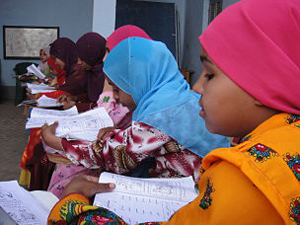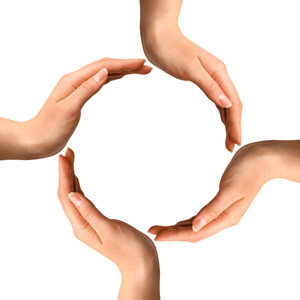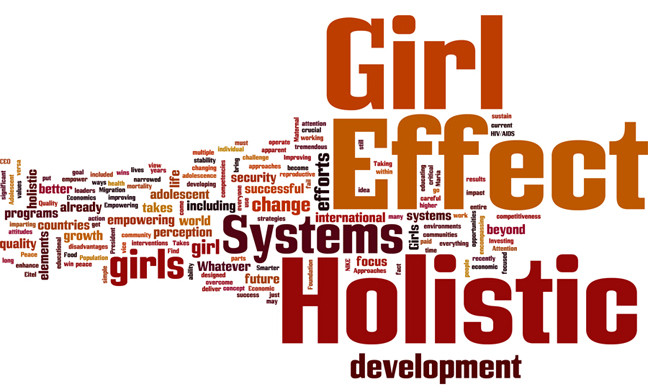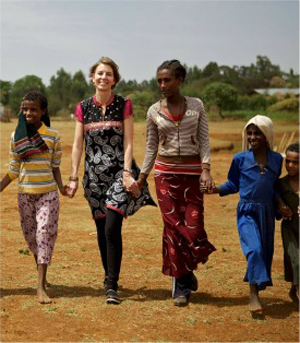“Whatever it takes”: Holistic approaches empowering adolescent girls
By Marcie Christensen
For years, significant attention has been focused on the fact that empowering women can bring economic development, peace, and stability to developing countries. More recently, some programs have narrowed their efforts to focus on adolescence as a critical time for development that will have the greatest impact on both the individual girl and on her future world.
It has become apparent to leaders in international development that beyond educating girls (still a tremendous challenge in some parts of the world), imparting attitudes and values designed to enhance leadership competencies is crucial to girls’ ability to overcome multiple disadvantages and put their educational opportunities to use building better lives for themselves, their current and future families, their communities, and their countries.
Improving people’s quality of life, and empowering them to sustain a higher quality, is (theoretically) the goal of international development. Quality of life is a holistic concept encompassing many elements, and programs that focus on improving one or two elements may fail to achieve success. More successful development efforts are holistic approaches that view those they empower as actors who operate within systems. Attention must be paid to all the ways the systems affect adolescent girls and their environments, and vice versa, in order to come up with interventions that will work over the long term. The most successful efforts go beyond strategies to change the girl’s perception of herself, to proactively change the entire community’s perception of the girl.
Holistic Approach Example
The Ishraq program in Upper Egypt is a multi-dimensional program for 12-to-15-year-old out-of-school girls — an early girl-centered program generated by the Population Council in 2001. The program sought to equip adolescent girls with social, health and economic assets while ensuring sustainable change by systematically developing the support of families, the community and local government. Ishraq (“sunrise” in Arabic) has expanded from four classes in rural villages to fifty classes, informing and benefitting girl-centered programs in several other countries along the way. In addition to providing literacy classes, a life skills program, and sports, Ishraq established girl-friendly spaces in the communities for girls to meet, learn, and play. Prior to this program, local youth centers were off-limits for girls, and they had no opportunities to socialize together.

Ishraq leadership also knew that success would be enhanced by changing the attitudes and behaviors of boys, especially brothers of adolescent girls, who are traditionally tasked with controlling their sisters’ mobility. The program trained two young men from each village to lead learning groups for boys, teaching gender issues, communication skills, values and human relations.
— Nadia Zibani, “Ishraq: Safe Spaces for Girls to Learn, Play and Grow”
This month’s Featured Program, the Mariposa Foundation, takes a holistic “whatever it takes” attitude to achieving their mission to end generational poverty by educating and empowering girls to create sustainable solutions. “Whatever it takes” includes finding ways to demonstrate that girls’ participation brings benefits not only to the girls, but to their families and communities.
So many of the organizations Dining for Women has supported over the past 10 years embrace a holistic approach to their programs that we tend to take for granted the practice is widespread. An article by Alfio Cerami, professor and author, in the April 2013 issue of The Guardian seems to indicate that international development has much work ahead of it to achieve holistic programming. In Development Institutions: Adopt A Holistic Approach, Cerami accuses such organizations as UNDP, Unicef, USAid and World Bank of paying little attention to “the vital synergies that exist, and must be strengthened, between development economics, social protection and democratization”. Cerami claims that long-term goals such as “economic growth, individual well-being, community-based solidarities, interpersonal trust and political representation” can only be achieved by addressing every component in the system, including corruption.
Strong Call for Holistic Approach

Holistic approaches are more likely to engage systems thinking, more likely to identify barriers and obstacles not immediately foreseen, and more likely to develop sensitive ways to transform or surmount those obstacles. Holistic programs also focus on transforming the lives of the people who surround adolescent girls – shifting their thinking to bring awareness to the value of girls. This gives the entire community ways to design a future free from poverty. Girls can ultimately become developers of strong societies and prosperous communities, and organizations that assist them need to honor the complexity of the systems in which they live.
- USAID Youth Research, Evaluation, Service and Learning Project 2013
- Nadia Zibani, “Ishraq: Safe Spaces for Girls to Learn, Play and Grow”
- Maria Eitel, President and CEO, NIKE Foundation, in Smarter Economics: Investing in Girls
- The Girl Effect


